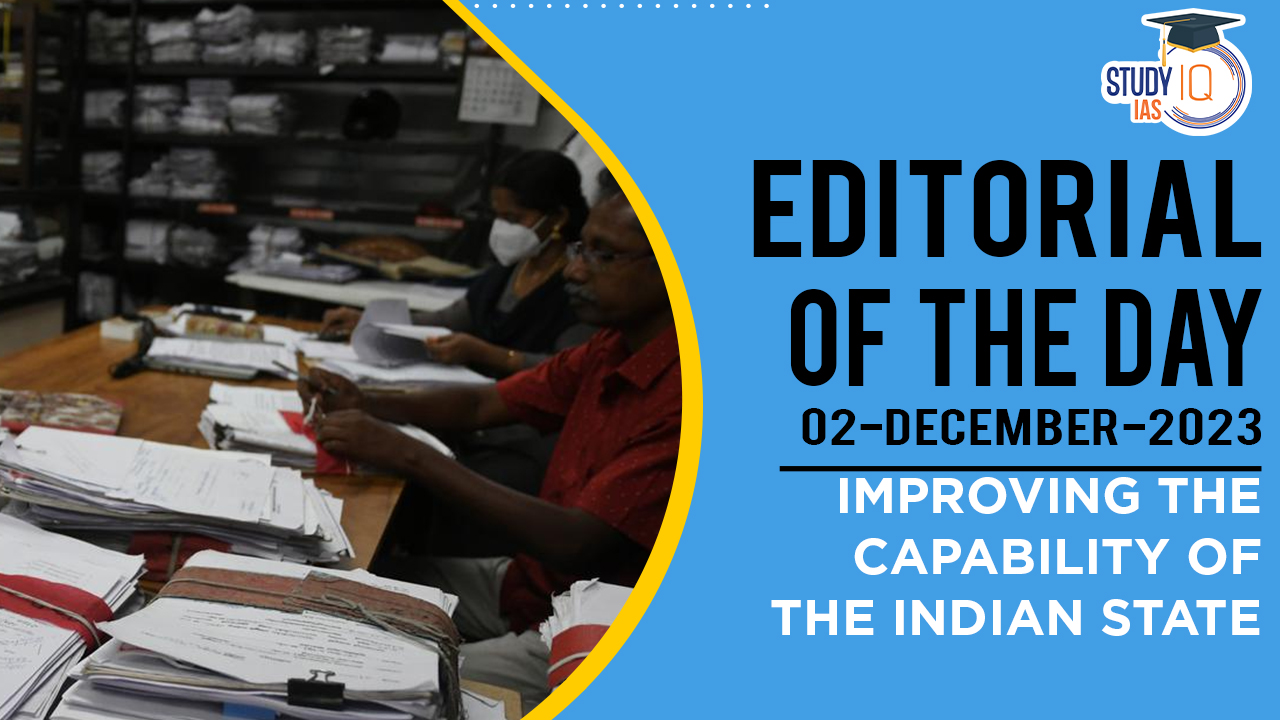Improving the Capability of Indian State
Context: Contrasting the large size of the Indian state with its bureaucratic inefficiencies. Despite a large number of personnel, the civil service’s per capita ratio is low, leading to suboptimal governance and policy implementation.
We’re now on WhatsApp. Click to Join
Summary of the Article
| Aspects | Challenges | Way Forward |
| Increased Public Spending Advocacy | Policy failures due to unwieldy bureaucracy | Delegate more power to front-line personnel. |
| Perverse incentives within public institutions. | Clearly define processes for personnel to use. | |
| Skill gaps among officials. | Enhance state capability without adverse fiscal/political consequences. | |
| The technocratic gap | Top policymakers lack necessary skills. | Implement regular, institutionalised lateral entry for skilled professionals. |
| Over-Reliance on costly consultancy firms. | Augment professional staff (e.g., SEBI, RBI need more compared to US counterparts). | |
| Narrow audits by CAG focus on rule compliance, not policy objectives. | Encourage discretionary decision-making through audit reform. | |
| Political will needed to address issues like post-retirement appointments. | Increase retirement age, set upper limit for all appointments. | |
| Public versus private sector | Performance-linked pay is less effective in the public sector. | Recognize that public sector jobs attract individuals motivated by social good. |
| – High salaries due to past pay commission hikes may reduce effectiveness. | – Moderate future pay raises, lower upper age limit for government jobs. | |
| – Job security and favorable conditions lead to salaries exceeding private sector. | – Reduce appeal for those motivated solely by money, attract socially-driven individuals. |


 UNEP Champions of the Earth Award: UN's ...
UNEP Champions of the Earth Award: UN's ...
 Shilp Didi Programme: Empowering Women A...
Shilp Didi Programme: Empowering Women A...
 Is the Falling Rupee a Cause for Alarm?
Is the Falling Rupee a Cause for Alarm?

























